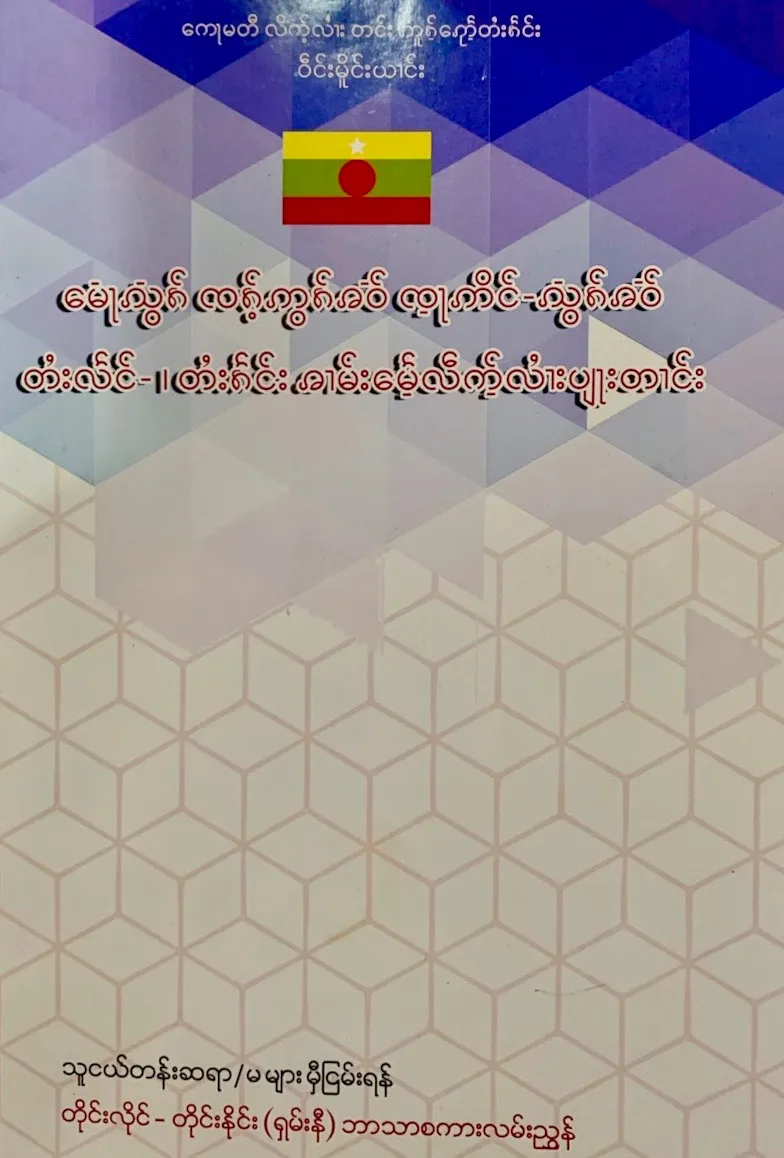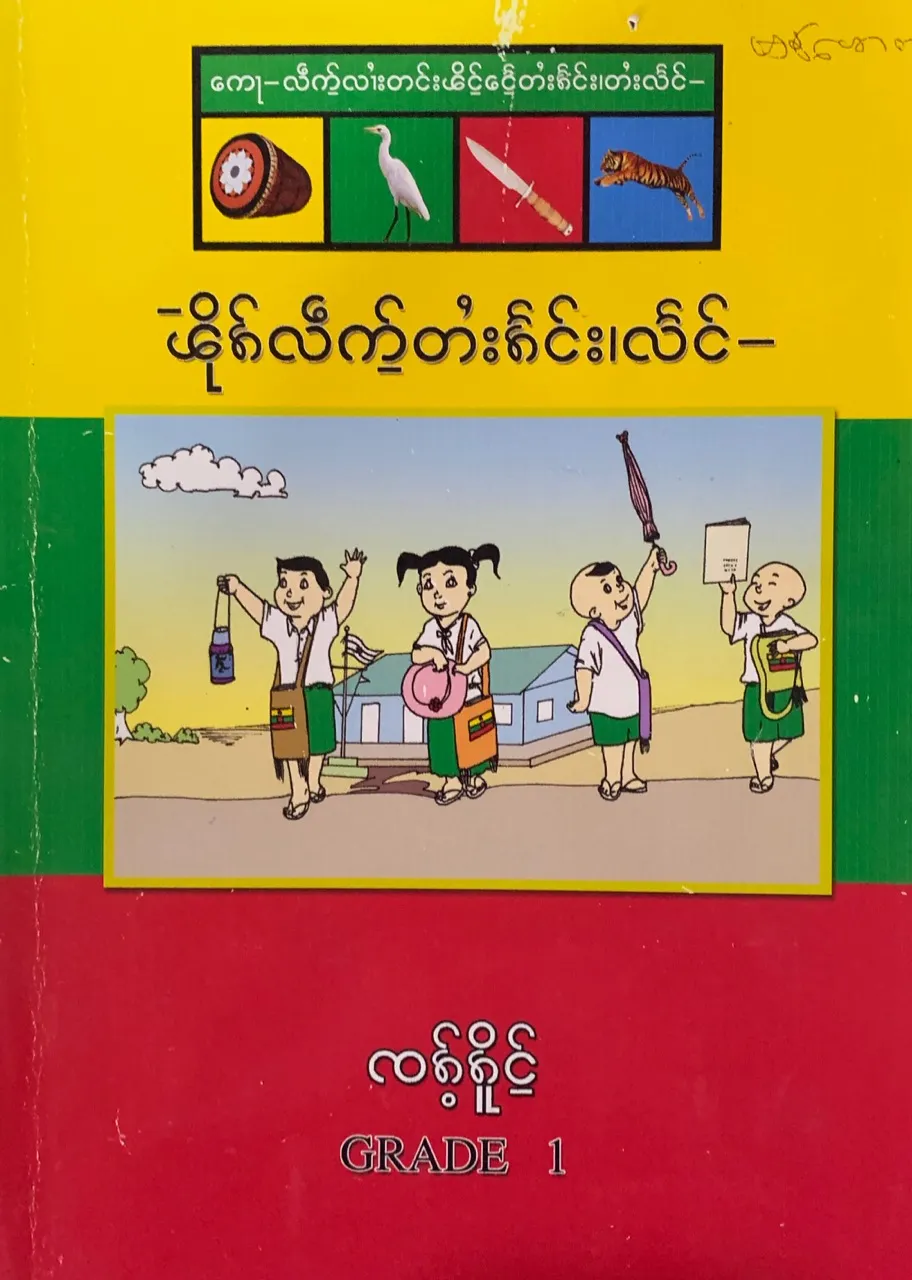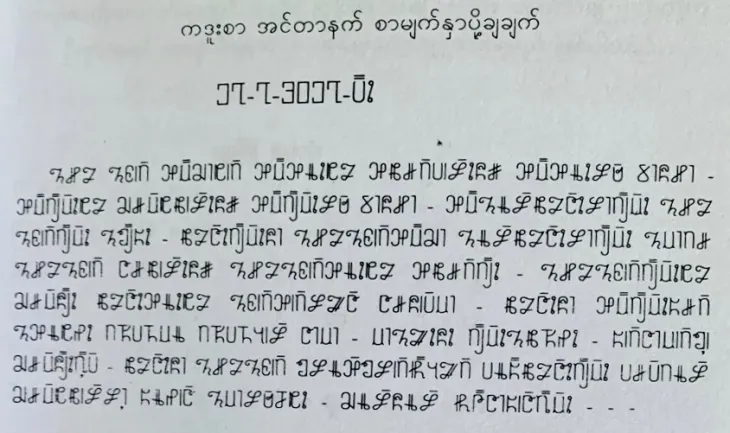Nicolas Salem-Gervais and Mael Raynaud present two case studies and conclude this three-part post.
This is Part Three of a three-part post based on research undertaken for Urbanize: Policy Institute for Urban and Regional Planning, and supported by the Konrad Adenauer Stiftung. This three-part series is largely based on a total of over 130 interviews conducted between December 2018 and February 2019 as well as between May and September 2019 in Shan, Kachin, Chin, Kayah, Kayin and Mon States, as well as Sagaing and Yangon Regions and Naypyidaw. Interviewees include various levels (township, district, State/Region, Union) of the Ministry of Education and Ministry of Ethnic Affairs administration, literature and culture committees, Regional ministers, Regional MPs, Local CSO and Media, ethnic political parties’ representative, school headmasters and teachers. Most documents and statistics referred to in this article were collected in the course of these interviews.
In Part One and Two of this article, after briefly recalling the different arguments for the teaching of ethnic minority languages in government schools, we have described the unfolding language-in-education policy, and the ongoing shifts aimed at training more local teachers, able to use and teach ethnic languages in the schools. We then have described structural challenges to this unfolding language-in-education policy, namely the teaching of ethnic languages in urban areas, which tend to present more diverse populations, and the challenges of formalizing and standardizing “common” languages corresponding to various ethnonyms and political projects.
In this Part Three, in continuation of earlier papers where we have succinctly described evolving linguistic endeavors and dilemmas among the Danu, Shan, Akha and Palaung in Shan State, we offer two brief case-studies. Our ambitions are by no means meant to give a thorough linguistic description of these languages and their variations ⎯a task we are not trained for⎯ but rather to point out some of the socio-linguistic features of these languages, in connection to the endeavors of making them available as subjects in schools. We will then offer a general conclusion to this three-part series.
The Red Shan (“Shan Ni” in Burmese or “Tai Leng”, in Shan) inhabit western parts of both the Sagaing Region and Kachin state, with a population estimated to be several hundred thousand (some Shan Ni actors reckon they may total close to a million). In any case, their demographic weight is officially acknowledged, under the 2008 Constitution, to the extent that there is a Shan ethnic affairs minister in both Sagaing Region and Kachin State.
A large part of the Shan population in these two State and Region identifies as “Shan Ni/Tai Leng” (except for smaller groups such as Tai Khamti, Tai Sar, Tai Leu, etc.) even if many are registered as “Burman” on their official documents. It should be noted that the mobilization of a “Shan Ni” identity (distinct from overarching “Shan”) is often linked to statehood claims, which have been voiced by both an armed group and a political party.
From a linguistic standpoint (and within the context of a relative homogeneity of the Tai languages family), there are not only differences between Shan Ni and the other Shan languages/dialects spoken in Shan state, Kachin State and Sagaing Region, but also significant dialectal variations according to different regions within speakers identifying as Shan Ni. These variations, as it is common among Tai dialects, include (fairly systematic) variations in consonants and tonal system, as well as some dissimilarities in the lexicon.
Another variation among Shan Ni dialects, which is possibly an influence of the Burmese language in certain regions, can be described as abundant syntactic change, from Subject-Verb-Object to Subject-Object-Verb (a feature that does exist, albeit in a much less systematic fashion, in certain parts of Shan State). Finally, in several townships of Sagaing region, such as Tamu, many self-identified Shan Ni hardly speak the language anymore. During our visit in this region, several members of local Shan Ni LCCs openly admitted that their own skills in that language were very limited.
After several policy swings over the years, around the early 2010s, most of the Shan Ni LCCs decided to adopt a script slightly different from that used for Tai Long (“standard shan”) to write their language(s). The shape of some consonants differs, as well as the tones marks. This has resulted in multiple Shan Ni / Tai Leng textbooks, produced during the 2010s, each with slightly different scripts, and based on different dialectal variations (see pictures).
The first conference aimed at standardizing the Shan Ni language was held in 2017 and was largely unsuccessful. A second conference took place in June 2019 in Monywa, resulting in an agreement of the Shan Ni LCCs from different townships on draft textbooks for kindergarten and Grade 1 (see pictures). For the Shan Ni Literature Research Commission (သျှမ်းနီစာပေသုတေသနအဖွဲ့), based in Monywa, these textbooks are the very first steps towards the standardization Shan Ni/Tai Leng language.
The road towards standardization is, however, paved with many challenges. In several townships of Sagaing Region, LCCs and other political actors tend to favor using Tai Long teaching material from Shan State, arguing that merging into the “common” Shan language and identity will broaden the perspectives of its youth.
The Tai Leng Literature and Culture Committee for Kachin State (who insists on being called “Tai Leng” and not “Shan Ni”) have also completed their own textbooks (up to Grade 3), using a slightly different script, in the frame of the local curriculum developed in Kachin State, with some support of UNICEF and the State government. While the representatives of a few townships of Kachin State did attend the conference in Monywa, at the time of writing, the two projects remain distinct.
Regardless of these political disagreements that may be overcome in the future, the project of standardizing Red Shan, in itself, is certainly ambitious. Beyond the completed textbooks for the two first grades, which merely present the script, the project of standardizing the language entails deciding on standard vocabulary, spellings, pronunciation and syntax, by merging language features of different regions.
Like elsewhere in the country (see for instance Müller 2016 in the case of the Kachin languages), the committee in charge of composing the textbooks aims at “purifying” the language, by reviving, or creating, vocabulary to replace the loanwords (mainly from Burmese) and getting rid of Burmese-style word order of some varieties, which the committee perceives as “un-Shan”. It remains to be seen whether Shan Ni speakers of the different regions will actually adopt this new standardized language and ultimately meet the standards set by the committee.
In addition, in those regions where Shan Ni is no longer spoken (mainly in Sagaing Region), this project, from a pedagogical standpoint, amounts to adding a foreign language to the curriculum. This prospect may or may not generate enthusiasm among the population, but its pedagogical implications are in any case drastically different from the perspective of using mother-tongues to facilitate the education process.




As a second case-study, we present examples of two languages which until recently did not have any written form, but which are now, in response to the national shift in language-in-education policy, increasingly subject to practical and ideological drives towards standardization (see Part Two).
The Kadu (Asak in their own language) live mainly in Katha District in northern Sagaing Region and to a lesser extent in Kachin State. Estimations of their population range from 30,000 to 100,000, an important proportion of whom speak only Burmese today. Kadu is a Tibeto-Burman language, with three main dialectal variations, corresponding to three different areas (Mawteik, Settaw and Mawkhwin), within a region mainly populated by Shans and Bamars (Sangdong 2012). According to the chairman on the central Kadu LCC, two of the dialects are fairly similar, while the third differs more, and is closer to Kanan language. The vigor of the languages also differs from one location and dialect to another, the speakers of Mawteik dialect having largely shifted to Burmese.
Following the announcements of language policy shifts by the Thein Sein government in the early 2010s, local and outsiders scholars, both Buddhist and Christian, started to develop different scripts for what had been only a spoken language. Two of these scripts are Roman-based (one of them adding phonetic symbols), another uses modified Burmese characters, and the last one uses its own characters (see picture). The materials developed in each of these scripts seem to be based on different dialects, and the different groups are competing, to some degree, to develop their respective written languages; as of 2019, keyboards have been developed for using at least 3 of these scripts online.
In an interview of June 2019, the chairman of the central Kadu Language and Culture Committee was convinced that a single script and written form should be adopted for the Kadu language, but was not yet sure how to bring these different endeavors together and settle this issue.
The neighboring Kanan, which constitute a significantly smaller group (population estimations range between 9,000 and 20,000) are still in the process of developing a written language using a script inspired by the Tai Long and Pa-O of Shan State. They hope to be ready to introduce this language in the schools by the 2020-2021 school year. From an internal politics perspective, the Kanan seem to be in an easier situation than the Kadu. This comparative advantage can be explained, to a large extent, by their geographical situation: the vast majority of their twenty-four villages are concentrated in Bamauk township, with little to no dialectal variation, which also enables regular meetings and an inclusive process in devising a written language.
The dilemmas the Kadu face also echo the case of other languages without written traditions, such as the Moken in Tanintharyi Region. As elsewhere in the country, following the adage that “ethnic groups who don’t have a written language tend to perish” as an explicit rationale (see Part Two), a curriculum has been developed, with the involvement of Christian missionaries, in order to teach the Moken language in the schools, and was recently submitted to the Tanintharyi Region government. However, Moken specialists, such as Jacques Ivanoff and Maxime Boutry, have serious doubts on the prospects of resorting to written forms to safeguard what is fundamentally an oral culture. Moreover, new linguistic and political dilemmas seem to be appearing when it comes to Tanintharyi Region’s approval of this teaching material, notably because of the existence of several dialects (estimations vary between three to six) among a population estimated to 2,000–3,000 individuals.

The last few years have witnessed encouraging developments towards making ethnic minority languages available in the government’s primary schools. Dozens of curricula have been, or are in the process of being, developed. Recent policy shifts also aim at training more local teachers able to use ethnic minority languages in formal education, through measures that can be seen as positive discrimination.
Within the same period, challenges to a (re)introduction of ethnic minority languages in formal education keeping all its educational and political promises have also become clearer. The multilayered administration of the Ministry of Education is often slow to react to local demands, which regularly creates frustration and discouragement. Urban areas and schools attended by students from different ethno-linguistic background present logistical challenges which are liable to have political consequences if mishandled. Finally, there has been a multiplication of linguistic debates and controversies around the country, sometimes with several layers of complexity, over the question of which particular languages/dialects should be promoted and taught in schools.
We strongly believe that the current evolutions in language-in-education policy constitute a historical and welcome shift, within the frame of a broader and indispensable decentralization process. However, we are also convinced that the argument according to which the more ethnic minority languages are present in formal education, the more there will be benefits in terms of (1.) preserving language diversity (2.) reducing the “language barrier” for ethnic minority children and (3.) fostering national reconciliation, warrants reassessment.
As we hope to have shown in this paper, there are currently practical, ideological, and political drives towards the standardization of ethnic minority languages at play in Myanmar. This process of discretizing, formalizing and standardizing languages so they fittingly correspond to a list of ethnonyms, entails major tradeoffs in the three above-described dimensions: (1) Standardizing, by definition, means diversity suppression; (2) Standardization often means that the children are taught a language which is substantially different from their actual mother-tongue, and from anyone’s mother-tongue in some instances; (3) These languages and identity issues are particularly sensitive in contemporary Myanmar, notably through the volatile and contentious space of public debate that is social media, and in the context of upcoming general elections in which ethnic parties will play a major role. As much as a more inclusive language-in-education policy does offer unique leverage towards “national reconciliation”, the diverging views regarding the choices of “common” languages corresponding to various ethnonyms and nationalist projects, as well as the philosophical contradictions underlying standardization processes, may contribute to the shaping of shifting antagonisms.
Most likely, these issues are, to a large extent, temporary symptoms of a historical phase of language and identity renegotiation, in a post-cold war fashion, after decades of military rule under which these projects were often frozen, or at least largely kept within communities. But at the same time, the overall political culture pushing towards equating ethnonyms, languages, territories and political prerogatives, may well prove to be an enduring obstacle to long-lasting peace.
Each group’s situation is unique, not all ethno-linguistic identities are problematic, and some of the current language controversies will certainly be settled over time, which may eventually allow for more ambitious language-in-education projects to be rolled out. But when it comes to language-in-education policy in the government schools in the foreseeable future, a flexible approach appears to be key. The current aim of teaching ethnic minority languages as subjects and supporting their use as “classroom language”, parallel to the efforts to reach State/Region level compromises for the teaching of local cultures, thus appears to be a well calibrated policy for the years to come.
The pace of implementation of this policy, constrained as it is by financial considerations, will be equally crucial to reform. Going too slowly could kill momentum, upset hopes and expectations, and ultimately reinforce bitterness toward the central government. On the other hand, going too fast and acceding to all demands without careful scrutiny is liable to lead to significant waste of public resources, and may contribute to exacerbate politico-linguistic deadlocks within ethnic minority groups, by raising the stakes behind these complex and sensitive issues.
(All images and media courtesy of Nicolas Salem-Gervais)
Nicolas Salem-Gervais is a Maitre de conférence at the Burmese language section, South East Asia Department of Institut National des Langue et Civilisations Orientales (INALCO) in Paris, and is affiliated to Centre Asie du Sud-Est (CASE). Since 2007, his research has been dealing with various aspects of education and nation-building in Myanmar.
Mael Raynaud is head of research at Urbanize: Policy Institute for Urban and Regional Planning, based in Yangon. This post is part of a research project undertaken for Urbanize and supported by the Konrad Adenauer Stiftung. The authors wish to thank Ei Shwe Phyu and Tinzar Htun, who have contributed to this project since October 2018.
Like This Article
September 16, 2024
June 18, 2024
March 06, 2024
February 22, 2024